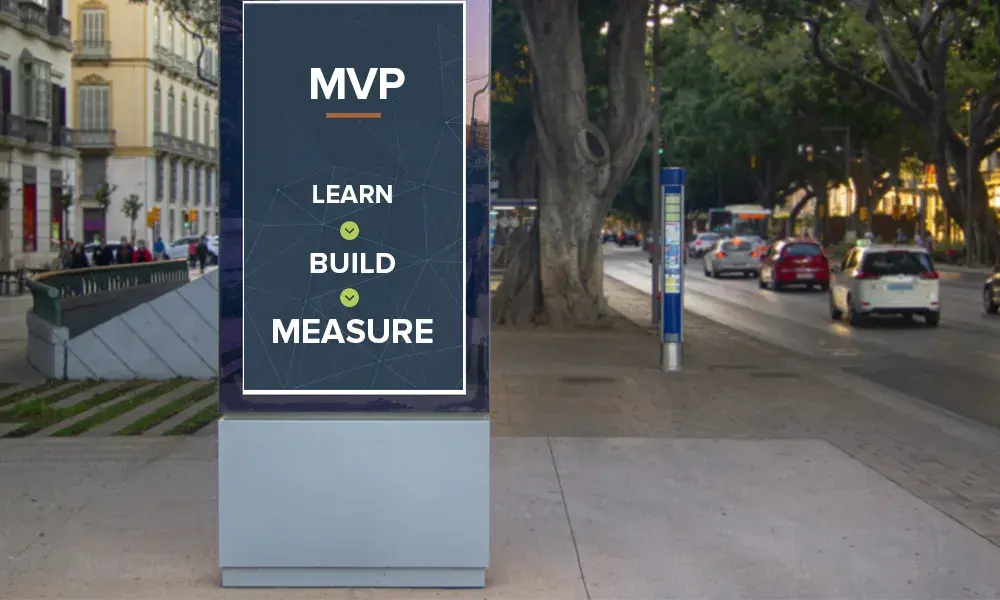In recent times, the importance of MVP (Minimum Viable Product) has increased rapidly, because continuous improvement and consistent growth of a software product is an essential part of business. The current situation has led businesses to institute several budget cuts in several departments. In such testing times, MVP is a proven strategy, and the best way to launch a new product. It is universally adopted not only by start-ups but also by the well-established companies.
So, let’s explore why MVP is important.
What is MVP?
To define MVP in a simple form, one can say that it is similar to the POC (Proof of Concept), or a smaller version of the product with limited features. MVP is created and specifically designed to check and test its reception of target audience and market performance before adding the more cost and time-intensive elements.

MVP drives product vision in the right direction
Structure of an MVP is a tactic for avoiding the development of products that customers do not want. This basically presents an idea where any organization rapidly builds a minimum set of features that is enough to set up the product and test the main assumptions about the public’s interactions with the particular product. Imagine that you’re starting an idea and nothing of that product is built – your primary goal must be to prove that people will benefit from what you’re planning to build. An (MVP) Minimum Viable Product would be built at a minimum to prove that your solution will work.
It is very tangible. But in reality, there are thousands of products that are made and no one cares about them. A creation may have many great characteristics, but building characteristics doesn’t help a creation in search of a problem. Building an (MVP) Minimum Viable Product can save you both time and money, but it’s not an excuse to build a bad product. Manufacturing an MVP means thinking about all the possibilities that your product could attain — each feature, each potential page — and only doing the things most essential to prove people want it.
In short “Beta Version of any product – Minimal Viable Product”
MVP helps in entering into the real market in quick time so that you can field-test your ideas, research data and assess user reactions to the overall product concept in practice.
Time-to-market is minimum
It is quite evident that the audience gives their attention to the product that has entered first into the market. It does not matter whether your product provides a solution to the unsolved problem or your product has an innovative solution to the already solved one, the sooner you bring your product to the user, the better. It is because several similar ideas are ready to get in to take your place anytime. MVP development takes only a few months to roll out your product faster, which ultimately increases its chances of success.
Value for money
Cost-effectiveness is one of the most significant benefits of MVP. Developing the initial versions of your product with specific and selected functions makes it easy and safe in respect to cost. Also, by lowering your investments in the beginning, you can keep a space for some manoeuvring in the future.
Fasten the learning curve of your team
When you release the first version of your MVP, you get to learn about the experiences of real users. And you cannot achieve such lessons with internal testing or research exercises. Hence, placing your product in the market in its MVP version gives your team opportunities to get in-depth learning of your product and utilize the feedback received by the users in improving and enhancing the upcoming releases of the product.
The nature of MVP is more suitable to the iterative processes than linear ones. It provides your team with a platform to learn and adopt iterative development processes like Agile, which can add more value to your product during its development.
How MVPs/Prototype helped a Norway-based startup, Adress
A Norway-based FinTech startup, Adress came to Akeo to get their prototype developed. Akeo under one of its specialized services Akeo Tech-Start helps startups to build to transform their innovative ideas to reality. Being the technical partner, Akeo developed a prototype to showcase how the platform will connect both buyers and sellers and facilitate the transactions.
After receiving the prototype, Adress tested the product. They soon discovered that the problem they were trying to solve might not have been so big. The solution seemed like a complementary product suitable in an existing set-up. Moreover, it would take time to roll out the solution.
Why don’t we help you take the right decision like we did for various startups
MVP builds a solid foundation for your product by
- Creating early buzz and establishing it
- Understanding and analysing the potential customers better
- Embracing user’s feedback
- Allowing more time to plan an effective product strategy
- Getting the attention of investors
- Coping up with the competition
- Finding loyal users
Takeaways
If you look at the bigger picture, it doesn’t matter what business you are in; minimal viable product development seems to be the wisest and safest way to develop and launch a new product. With MVP, companies can significantly lower the challenges and risks that could come with investing in the wrong idea, or going out of budget.


.jpg)


